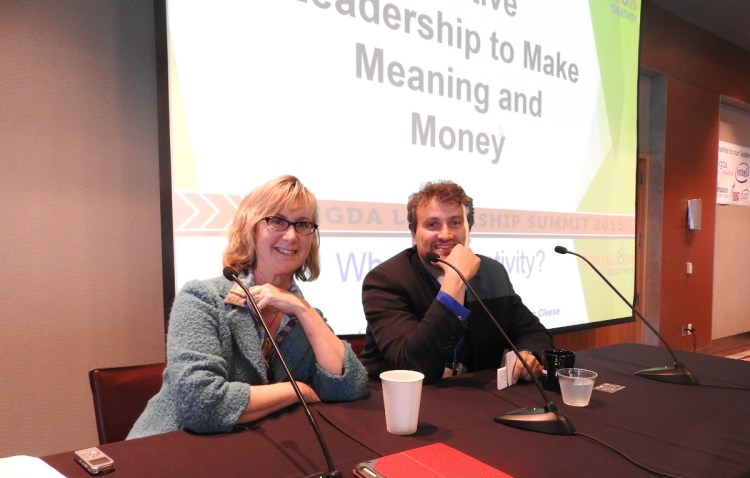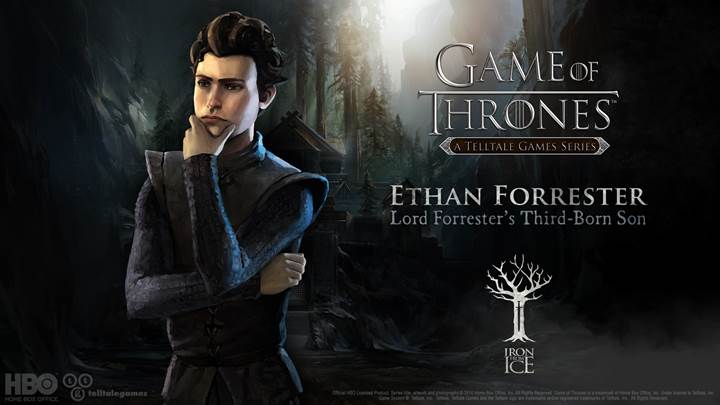GamesBeat: What about looking outside the industry, at a company like Pixar? Pixar has never had a dud, among any of its movies.
Gaiser: Google is all over. They do yoga. They do mindfulness and meditation. Part of getting back to being conscious — we’re all kind of half-conscious, which is why I talk about unconscious bias – is by raising consciousness. Meditation and yoga and the martial arts—There are many different ways to get back in the moment. That’s what being in your full senses actually is.
We were all in the moment as kids until we got taken out of it. That was the beginning of the end. We’ve been institutionalized. It’s about taking the steps to slow down our minds so we can access our innate wisdom – our perceiving, imagining, sensing, feeling. All of those things that are off-limits in corporations, because this intellectual intelligence is the master. That’s a definite step that Google is taking, and it’s working.
GamesBeat: In games, I’d point at Telltale Games as a company that’s done creative work time and time again.
Bernstein: Some of the most successful companies rotate designers. “Why don’t you try it? Why don’t we have a game jam where everybody tries their hand at design?” You get ideas that are weird and random and interesting, compared to teams that are structured in such a way that one person is the designer, they generate all the creative ideas, and all the other people just stay in line and follow that one person. It doesn’t work well. Companies that are structured in a more open manner, from a design perspective, tend to do better.
Question: There’s a lot of opportunity in the game industry right now. You can see that reflected in products and innovations and things that are happening out there. So what’s the big deal about the games business?
GamesBeat: We did go through this whole panel on the assumption that we had a problem or a crisis of some kind. Questioning that assumption is legitimate. We can still argue quite a bit about a lot of things in that vein. We can argue whether Lara Croft is a great woman character or not. That’ll last a few hours.
Bernstein: That’ll last a few years. But this is important. We did go into this with the assumption that things aren’t all that great. There’s Gamergate, for one thing. Just from an operations level, a financial level, you have this big dichotomy between the M&A market and the financing market being really rich, and—Go out there and talk to VCs and angels and private equity funds about investing in game companies. Their biggest issue is, innovation is not replicable. Companies come out with a hit, but they never do anything ever again. They’ve put themselves into a structure where they can’t replicate their model.
It doesn’t have to be like that. In fact, it wasn’t like that at a few times during the history of the industry. When distribution channels were more open to different types of games and different types of content—Right now, in mobile games, you have two shelves. Back when Megan and I were running our businesses, there were 20 or 30 shelves with 20 or 30 different products. You could innovate. You could do all kinds of different things you can’t do now. On Steam it’s becoming much more competitive. Steam caters to more and more specific genres, specific types of gamers, specific demographics. Then there’s the relegation to indie, where everything else falls.
That’s all my answer to that, then. That’s the crisis I’m seeing.
Question: What role do tools play in accessing greater creativity?
Gaiser: Part of the solution is to start creating systems or practices or tools to become more mindful, less unconscious. Yoga, mindfulness courses, all of these thing in addition to unconscious bias training. But it has to be a range. I believe creativity is our human operating system. We have re-learn how to tap into all of our senses again. Some people have tapped in to more creativity than others, but that doesn’t mean all of us don’t have the same access.
I was raised creatively. That’s why I led creatively. The other, I probably need some work on. We’re all in different places. But it’s really about human transformation. That’s something that will be implemented. It’s an interesting thought.
Bernstein: We’re seeing some interesting tools out there for facilitating enterprise-level collaboration. Technology doesn’t do anything without changing values, though. Maybe I’ll think of a way of using these tools that’s more traditional — the traditional waterfall model, go there and do this, that kind of thing. You need change from within to be able to maximize the power these tools and technologies can have in an organization.
But the tools are there. It’s all there. This consumerization of the enterprise, as we’ve talked about—These tools can make it easy to tap into the creative potential of the organization. But they need to be willing to do that.
Gaiser: It takes courage. But once that transformation has begun, it feels so good to be in that space. You want more. You don’t care if you have to practice a little and get better at being fully present with people. The reward is so great. Then, once you’re in, with all of your intelligence, you look at that tool and think, “That’s so boring. Let’s make it more exciting, more interesting.” Because then you’re thinking differently. You’re bucking the status quo. That’s what creative leadership is – to do something better, to make something better, to make something meaningful that helps people really connect.
VentureBeat's mission is to be a digital town square for technical decision-makers to gain knowledge about transformative enterprise technology and transact. Learn More



